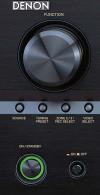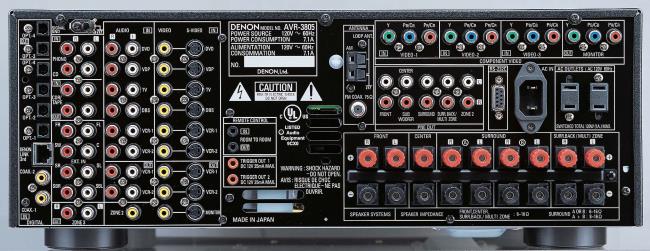Denon AVR-3805 7.1 Receiver with Auto Setup Room EQ
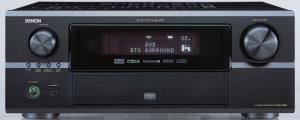
Specifications:
- Seven Channels plus LFE (120 Watts x
7)
- Codecs: DD, DTS, DPL-IIx, DTS Neo:6, DTS ES Discrete
6.1, DTS 96/24
- Auto Setup Room EQ with Optional Microphone
- 24/192 DACs on All Channels
- Component Video Inputs have 100 MHz Bandwidth
- Monitor not Needed for Setup
- Dimensions: 6.7" H x 17.1" W x 16.4" D
- Weight: 37 Pounds
- MSRP: $1,199 USA
Denon Electronics
Introduction
Recently, I decided to do some car shopping. I deserve it, and after almost
30 years of driving a manual transmission, I thought, albeit briefly, about
buying an automatic.
I found out there are cars with manual transmissions that work like automatics and vise versa. So if you want to shift you can, but if you'd prefer one day to set it in drive, you can do that too. They have features galore, most I'd probably never use and some nice to have just in case.
That's what I think of the Denon AVR-3805, plenty of features and options, and with the new Auto EQ, you can set it on auto, or you can do it the old fashioned way, set it manually.
I know Denon has a dedicated following, and quite frankly over the years, I've been an enthusiast myself. Not to say there aren't other manufactures that also have repeat buyers, but in my experience, the first question from friends is, �What do you think of the Denon?�
I was thrilled to find out Denon was sending me the much anticipated Denon AVR-3805 receiver. Just like all of you, I'm a fan first, and I was anxious to get my hands on one.
This receiver replaces the highly regarded AVR-3803. As I reviewed
the specifications of this unit prior to receiving it, I was curious to know
(always with price in mind), what other receivers offered this impressive
array of features. My first reaction as I read down the list is I think
there are a lot of home theater and music enthusiasts who are going to love
the 3805. Now that I've spent some time with it, I can only agree with my
first hypothesis.
The Front Panel
The AVR-3805 I received was in the standard black, but is also available in
Silver. The Denons are always handsome. The front
of this unit presents a simple face with a large bright (dimmable) display
of information, and it's a lot of information. Silky feeling Master Volume and
Function knobs, and a pretty green-on/red-off standby button are the obvious
controls.
Press on the Denon Link logo and most controls are behind a flip-down trap door, including all the setup features.

Click on the photos below to see larger versions of
individual sections of the receiver front panel.
The logos that catch your eye are the exciting features of this receiver.
The first is the Dolby Digital EX and Pro Logic IIx (DPL-IIx), the latest from
Dolby Labs. Dolby Pro Logic IIx has the ability to decode audio signals
recorded on 2 channel and 5.1 channel sources and play them with up to 7.1
channels. Secondly, from DTS, there aer Neo:6, DTS-ES, and DTS 96/24 decoding.
Impressed yet? Hold on, because it's all good. As a side note, what is
conspicuously missing is the THX logo, but for those who are shopping in
this price
range, that may or may not be an issue.
Most importantly for me is the Denon Link logo, identifying the proprietary
connection that Denon has developed as their answer to multi-channel audio
decoding with most importantly, digital bass management compatible with some
of their own DVD players. Denon graciously provided me with the DVD-5900
Universal DVD-Audio/SACD player to test with the 3805.
The Rear Panel
The layout of the rear panel is somewhat more ergonomically arranged than
previous Denon receivers I've owned. I especially like the speaker posts
placed horizontally, which, without banana plugs, is always the most painful
part of a receiver hookup.
Click on the photo above to see a larger version.
Besides the removable power cord, two additional outlets are provided for
other components. There is the usual array of audio/video inputs: 11 analog audio
inputs one of which is on the front, 5 Digital (Optical) inputs (again one
on the front), 2 Digital (Coaxial) inputs and 1 Denon Link, (more on that
later). Also provided are 8-channel analog external inputs (pre-ins) for multi-channel
music.
On the audio output side, there are 8 analog pre-outs, 3 analog rec-outs, 2 additional
Multi-Zone outs, and finally, 2 Digital (Optical) outs.
Video inputs include 3 Component Video, 7 composite, and 7 S-Video (check
under the flip door for one of these). Outputs for video include 1 Component
out for a monitor, 3 Composite outs, 3 S-Video outs, and 1 additional
Composite output for multi-zone.
Rounding out the back panel there is an RS232C Control Port for
integrating with a Crestron control system.
What's Inside?
How about 120 watts per channel, 8 ohms with a THD under 0.05% (20 Hz-20
KHz) or 160 watts per channel into 6 ohms with a THD of 0.7%? On the audio
side, Denon gives you a HammerHead SHARC 32-bit floating point DSP processor
for all analog devices, 16 Burr-Brown 24-bit 192 kHz high resolution DACs (2
per channel on 8
channels). Also, Denon supplies its own AL24 processing, which supports 192 kHz sampling
of high resolution audio.
The Remote Control Unit
The RC-969 supplied with the receiver is just plain sexy. Satin finished
metal, �Electro-Luminescence� technology automatically activates when picked
up, (or when it's sitting near the subwoofer). My few issues with this
remote control: During daylight hours, the backlight is a bit hard to read.
Secondly, once activated, you can program it to stay lit for 5, 10, 15, or
20 seconds. During initial programming, this short amount of time is not
enough and you end up shaking the thing in your hand to get it to re-light.
Which brings me to my last minor complaint, the light buttons are a bit
small, and you're not quite sure if you hit the right one or not.

The great features though are plentiful. Besides all the Denon equipment, it
is universal for other non-Denon products. I easily used it to control my
RCA monitor and Pioneer DVD player. From the source menu, all three zones can
be controlled, as well as 10 components. Once a source is chosen, a new
lower screen activates specific functions to that unit. For example,
activating the DVD player gives you pause, play, skip, etc.
All receiver programming, surround modes, and set up can be done from the
remote as well as the front panel.
Denon LINK Technology
The AVR-3805 supports Denon's own digital audio signal transmission called
LINK. This unit represents the latest known as LINK 2nd Edition specifically
used for digital transmission of DVD-audio. Not far behind is the LINK 3rd
Edition with digital transmission of Super Audio CD (SACD). I'm told once
all the legal issues are taken care of, Denon would release an upgrade for
the AVR-3805. In the meantime, SACD playback is accomplished through the EXT
in analog connections.
Sound Zones
The AVR-3805 has great flexibility in speaker zone assignments. For example,
you can achieve multi-room two-channel power amp assignment, not only in a 2nd
zone but also a 3rd, complete with source selection and volume control for
each zone. If you'd prefer to assign the rear channel to back surround,
either 1 speaker or 2, you can, and I did.
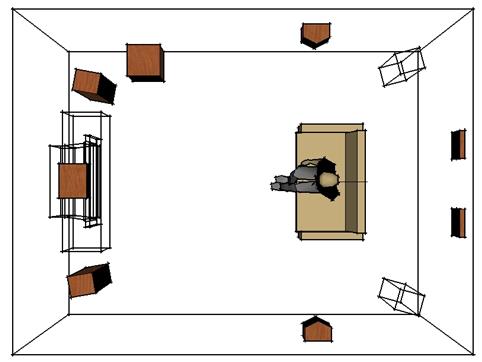
With Dolby Pro Logic IIx and DTS-ES (extended surround) 5.1 channel, or DTS
Neo:6, 2-channel becomes 6.1 or 7.1. DTS-ES is further decoded as Discrete
6.1 which is an independent channel recording, or Matrix 6.1 which undergoes
encoding to the SL or SR channels. Of course, the AVR-3805 set on auto will
detect either and play back for optimum performance.
My favorite feature is the Dual Surround speaker mode, which is the ability
to connect both a movie mode and a music mode speaker arrangement. Multi-channel music modes require the rear surrounds behind you, while movie sound
surround reproduction is best to your side. The diagrams illustrate the difference.
Movie Mode
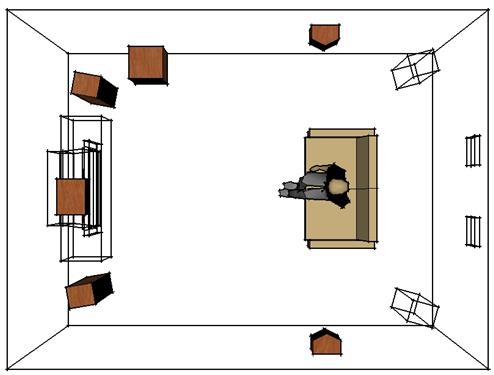
Music Mode
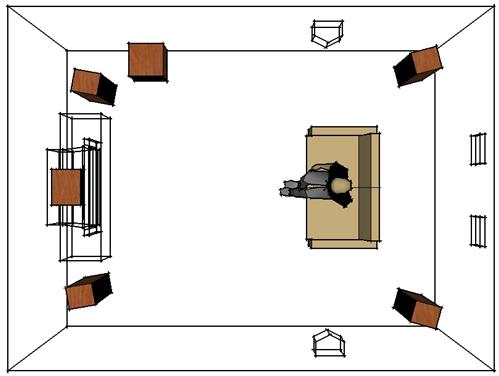
Auto Setup Room EQ
Denon has introduced in the AVR-3805 for the first time with an Auto Set-up
calibration and room EQ by means of an optional omni-directional Microphone.
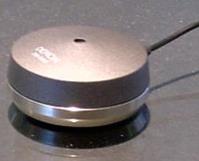 Calibration includes
six settings. Realize that the Auto EQ can be disabled
and all these settings can be handled manually, but where is the fun in
that? By placing the microphone in the �sweet spot�, the EQ process lasts a
few minutes and takes you through adjustments for speaker size, phase, and
frequency response. It will adjust channel and time delay, and without your
permission adjust frequency response through an 8-band parametric equalizer
for your room configuration and �optimize� the sound field for up to 7
channels. Room EQ can then be checked and modified as you wish. You then
have the option to choose the EQ Curve. Firstly you have the option of
turning the EQ off. Additionally, you can choose the �Flat� to all speakers,
�Front� which sets the characteristics of each speaker relative to the
fronts, and also �Normal� for general surround. Or go nuts, and do it manually
for each channel.
Calibration includes
six settings. Realize that the Auto EQ can be disabled
and all these settings can be handled manually, but where is the fun in
that? By placing the microphone in the �sweet spot�, the EQ process lasts a
few minutes and takes you through adjustments for speaker size, phase, and
frequency response. It will adjust channel and time delay, and without your
permission adjust frequency response through an 8-band parametric equalizer
for your room configuration and �optimize� the sound field for up to 7
channels. Room EQ can then be checked and modified as you wish. You then
have the option to choose the EQ Curve. Firstly you have the option of
turning the EQ off. Additionally, you can choose the �Flat� to all speakers,
�Front� which sets the characteristics of each speaker relative to the
fronts, and also �Normal� for general surround. Or go nuts, and do it manually
for each channel.
The images shown below indicate typical EQ for one channel, in this case, the Front Left,
the settings after the Auto EQ ran its setup. For the same setup, you can opt
to make your trim adjustments at 0.5 db intervals manually, again for each
channel.
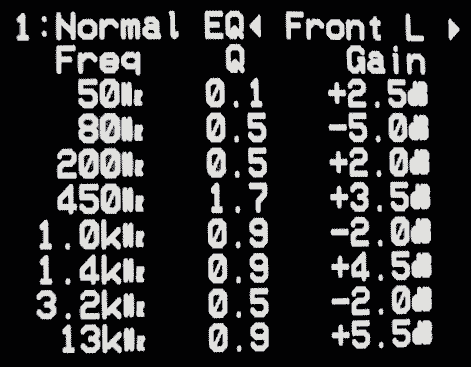
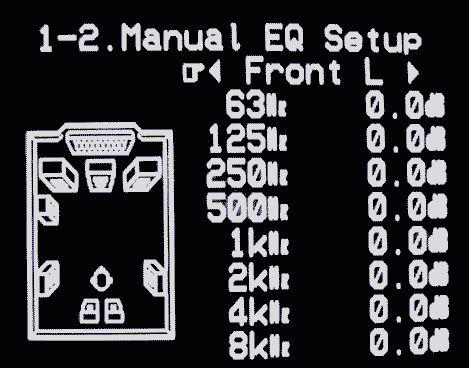
Speaker Setup Options
No surprise in this excellent receiver, all the usual speaker options
include: Configuration, Delay time, Channel Level, Crossover Frequency (40
Hz - 250 Hz). This can be applied to both LFE and Mains.
One other noteworthy issue regarding the subwoofer is during multi-channel
music playback through the EXT In, the sub can be set with additional boost
of 0 dB up to +15 dB (default) in 5 dB increments. Denon thinks of everything.
Video Setup
I'll be honest, one S-Video connection for on-screen setup, my preference is
to connect direct from source to monitor and bypass the receiver. Denon
specifies component video switching bandwidth of 100 MHz, but I did not test
it.
Tuner
Other than my wife listening to Howard Stern in the mornings, the tuner
capable of storing up to 56 stations goes mostly unused in our household.
Final Comments About Setup
Once complete, the final configuration can be locked, not that anyone else in
my house would ever attempt to override my settings, but it's nice to know all
that hard work can't be changed without your knowing about it. How easy this Denon is to set up is entirely up to the user's knowledge and a bit of luck
and experimentation. After 2 months I admit I'm still tinkering. My last two
receivers were also Denons and that was a tremendous help. The manual,
thick with information, is somewhat hard to follow at times. For me, I was
asking why, a lot. Or what's the advantage of one setup over the other. Be
patient and enjoy the ride, after all that's most of the fun, right?
Audio Playback
Playing back audio sources on CDs and DVDs, the 3805 has three modes. Pure
Direct mode turns off all video-related circuitry for the best possible
audio quality. Direct mode allows video images, and Stereo mode allows tone
adjustments while also watching images. Tone adjustments for bass and treble
are not available for Direct or Pure Direct modes.
Surround Functions
I've mentioned the surround parameters, Pro Logic and Pro Logic IIx earlier,
but the 3805 can playback in: Cinema, used in stereo TV programming, and
Dolby Surround. Music mode is recommended when no images are present. And
lastly, Game mode is provided for two-channel audio. Cinema, and Music modes
can also be chosen for DTS surround parameters.
DSP Surround simulation in the AVR-3805 uses digital
processing to alter the sound field. There are 10 preset surround modes that can be
used with material not recorded in Dolby or DTS surround, ranging from
WIDESCREEN - movie atmosphere, SUPER STADIUM - like in sporting events, ROCK
ARENA - for live concert, JAZZ CLUB - for small club realism, CLASSIC CONCERT
- for concert hall reverberation, MONO MOVIE, VIDEO GAME, MATRIX for improving
stereo recording, VIRTUAL, and lastly, my favorite, 5CH/7CH STEREO, which
simulates multi-channel audio like DVD Audio and SACD.
Performance
I was fortunate to have used the wonderful Krix Loudspeaker package I'd
previously reviewed as reference speakers for this article. I also dragged
out my KEFs from the closet.
The KEF C40's rated at 100W/8ohms have served me well over the years, and I
needed them one more time. Since I only have one pair, two-channel music was
predetermined. I'll just tell you the KEFs were alive as ever. I'm not
going to say I heard things I didn't before, but I did hear excellent stereo
playback. That short-lived test over, the Krix went back on line.
I do all my television watching with the receiver on, you never know when
you cross a great movie score or a live performance sending you scrambling
for the remote to turn the system on. Chick Corea's Rendezvous in New York
on HDNET came alive as the receiver clicked into Digital and the piano keys
and xylophone were sharply reproduced.
Naturally, I really wanted to listen to a lot of two-channel music. Switching
through Pure Direct mode, Direct and Stereo produced very subtle differences
if any. I don't think of this as negative, but an indication that even in stereo mode, this receiver was very musical.
I was quite surprised how much I enjoyed most CDs in five-channel mode. There
was no harshness or edginess or strange effects this format might have
created, just nicely balanced levels from all channels.
Multi-channel audio was superb, especially partnered with the Denon DVD-5900. I
can honestly say this was the big surprise for me, stunning clarity and
fullness from a receiver, and once again the channel distribution was
perfect. I pushed the limits of my own hearing threshold by pumping it up to
100 dB+, and the receiver gave no indication of fatigue. I almost felt like
it was daring me to crank it up even more.
If the audio success wasn't enough, where the 3805 really shone is in the
home theater environment. Watching the recently re-release of Indiana Jones
and the Last Crusade, the music was brought to the forefront, integral with the
dialogue and action. The AVR-3805 nicely placed the sounds in a very natural
position. As many times as I've watched that movie, the music score was
still entertainingly dynamic and very elegant.
So what about that 7.1 configuration? The first
DVD down my rack was Gladiator in DTS ES. I truly enjoyed the additional
rear speaker. My preference for multi-channel music is to have the
rear speakers behind me, rather than to the side as in movie watching.
Having the extra channel(s) behind you during the movie further engulfs you,
simply filling in the details. I truly endorse the rears, and my home
theater is now permanently upgraded. I give the 3805 credit for delivering a
stellar surround experience.
I can't say enough about base response, but in summary, it was smooth, tight, and timing
was right
on.
Conclusions
Although I have the Denon that precedes this unit, with the additional
features, giving up the AVR-3805 will be difficult. I think the Auto Room EQ
is very precise and a must-have feature for the new home theater enthusiast. It takes a
lot of the guesswork out of setting up for the first time. Seasoned home theater aficionados will enjoy the interaction with the Auto EQ. Bypass the auto
setup and maneuver the murky waters of complex room EQ on your own . . . your
choice. With the AVR-3805, they have the right tools.
I can tell you straight out, the AVR-3805 was a joy to use. I can't think
of anything a $1,200 MSRP receiver can deliver more than this unit. Denon
has a winner, and I highly recommend it.
- Piero Gabucci -
� Copyright 2004 Secrets of Home Theater & High Fidelity

